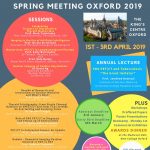
Assessing an avoidable and dispensable reoperative entity: self-referred flawed cleft lip and palate repair
Friday 2 October 2015
09.00 – 10.20
Assessing an avoidable and dispensable reoperative entity: self-referred flawed cleft lip and palate repair
Foroglou P.1, Tsimbonis A.1, Goula C.1, Demiri E.1
1. Dept. of Plastic Surgery-Medical Section-School of Health Sciences-Aristotle University of Thessaloniki-“Papageorgiou” General Hospital-Thessaloniki-Greece
Abstract
Introduction: The incidence of cleft lip and/or cleft palate (CLP) has reportedly increased from 1:1000 to 1:600 live births and is the commonest congenital birth difference. The main long-term morbidity of this condition is dysfunctional speech and communication impairment, followed by unfavourable surgical outcome
The Island of Crete was the place where the use of herbal medicine has its roots since the Bronze Age period. Although, the consumption of aromatic plants as component in curing common diseases is still on population’s practices, a new interest was appeared on the basis of studies with a focus on illness behavior as a mutual collaboration between the University of Crete and the University of Leiden, The Netherlands. The antioxidant activity of certain Cretan plants has been documented and it has been shown and reported that herbal extracts are possible to decrease lipid per oxidation in cultured lung cells exposed to iron or ozon. The biological effects and bioactivity of essential oils as well as their antibacterial properties have been previously discussed in the literature. However, it was the first attempt in Europe when a double blind randomized controlled trial examined the effectiveness of an essential-oil extract of three Cretan aromatic plants designed and implemented in rural Crete on patients with upper respiratory tract infection. Descriptive differences were recently reported in favorable direction especially in the virus-positive population, while these results guide at the moment a series of actions for further research and discussion on the potentialities in the therapeutic medicine. A recent joint attempt (Clinic of Social and Family Medicine and Department of Experimental Endocrinology at the School of Medicine, University of Crete) under the support of the National Strategic Reference Framework Program focused on the effectiveness of functional extract of Mentha Spicata encapsulated in yogurt with honey on lipids profile of health patients in rural Crete. The first reported results of a cross-over study which was designed and implemented recently were in a favorite direction and it was in agreement with the animal based study that was carried out in the frame of this project. In conclusion, the two first studies on the Cretan medicinal and aromatic plants support the potentialities of the use of Ethno botanical methodology to move the needle of innovation on viral infections and lipids metabolism. 4
1. Nuclear Medicine Unit, D.I.M., University of Bari “Aldo Moro”, Bari, Italy, 2. Department of Pediatric Hematology and Oncology, University of Bari “Aldo Moro”, Bari, Italy, 3. Nuclear Medicine Unit, Department of Biomedical Sciences and of Morphologic and Functional Images, University of Messina, Messin, Italy, 4. Positron Emission Tomography Centre IRMET S.p.A. Euromedicine Inc., Turin, Italy 10
The diagnostic performance of 99mTc-HMPAO radiolabeled leukocytes scintigraphy in the investigation of infections. A single center experience 14
Validation of numerical outputs of IAEA software by the analysis of diuretic nephrogram in children with antenatally detected hydronephrosis 15
Objective: To report the morpho-functional results of Aflibercept (Eylea) intravitreal injection (A-IVI) for wet age related macular degeneration (w-AMD). Subjects and Methods: We retrospectively examined 26 eyes of 26 patients (14 male and 12 female; mean age 80.5; range age 63-91) with a follow-up of 14 months, treated for w-AMD. All the eyes examined, did not receive any type of intravitreal anti-vascular endothelial growth factor (anti-VEGF) before Aflibercept. The morphological analyses included the Optical Coherence Tomography (HD-OCT; Carl Zeiss Meditec, Dublin, CA, USA), Fluoroangiography (Topcon retinal camera, IMAGEnet inc.) while the functional assessment included the best correct visual acuity (BCVA – logarithm of the minimum angle of resolution [LogMar]). The timing of the follow-up was: baseline, 3, 6, 12 months. Every patient received 8 A-IVI according to the protocol (first 3 monthly A-IVI followed by an A-IVI every two months for the first year, regardless the activity of the disease as the guidelines suggested). Statistical analysis was performed using ANOVA test. Results: At the end of the follow-up, 61.5% (16 eyes) improved the BCVA, 23.1% remained stable and 15.4% had a worsening of the BCVA (p-Value<0.02%). All the patients have had a significantly reduction of the central macular thickness at month 12 (P-Value<0.02%) at the automatic OCT measurement (improvement or resolution of the intra-retinal fluid or sub-retinal fluid). In the eyes we observed a worsening of the VA at the end of the follow-up (15.4%), a retinal scar development was detectable at the OCT even though the macula in these eyes resulted dry. Conclusions: The one-year results of A-IVI for w-AMD are statistically significant to improve (61.5%) or to stabilize (23.1%) the visual acuity from the baseline. The VA worsening in the 15.4% of the eyes could be due to the particular aggressivity of the neo-vascular membrane or to the late stage of the disease at the time of the observation and treatment. In fact we observed that the eyes that have had the best VA outcome were those which received an early diagnosis and respective early treatment. From our experience, with 12 months follow-up, A-IVI showed to be a valid treatment for w-AMD in patient who did not receive previous intravitreal anti-VEGF treatment. A long-term follow-up will be useful to evaluate the stability of the treatment. 17
Questions to authors: 18
a) Did your patients accept well your treatment-any side effects? 18
All patients accepted well our treatment with no systemic side effects and only minor complications such as subconjuctival haemorrhage and ocular pain 18
b) Is your treatment valid for dry AMD and what were your exclusion criteria? 18
This treatment is not valid in dry AMD. Exclusion criteria: previous stroke or ischaemic heart disease. 18
Questions to authors:
a) Can you inform us of what are the results from other researchers who have performed your method, even partly?
As stated these operations are individualised for each patient. Facial growth determines the timing of these revisions. They are performed in a tertiary care facility with quartenary input according to international standards and guidelines of specialist care. However, regionally or nationally agreed and/or implemented specialist practice guidelines are often compounded by individual surgeons practicing independently. In the literature there are series that distinguish secondary nasal deformity and cleft lip and palate reoperations. Other studies deal with cleft palate mobility, speech evaluation, fistula rate, orthognathic measurements and facial appearance. As a result of variations between surgical protocols for primary CLP repair internationally, cross-referrals between centres with different practices and patients’ moves to different areas or even countries, it is extremely difficult to assess singular lines of treatment for secondary repair or revision surgery.
b) How many patients did you study and what were your results in patients who have been operated for the first time and how many patients you studied and what were the results in patients who have been operated for the second time?
Between 2012 to date there were 5 new self-referred patients candidates for secondary or revision surgery who underwent 11 operations in total. All were initially treated elsewhere. This study focuses on this group solely and assesses their outcome. As per study design any older cases and any new primary CLP cases were excluded. Beyond this evaluation this study also presents the possibility of minimizing or even avoiding revision surgery for which the literature reportedly may amount to as many as 20 operations per patient. In contrast to numerous procedures an approach of careful evaluation, meticulous planning and execution together with full commitment to an agreed surgical strategy between surgeon and patient results in significantly fewer operations and a more favourable outcome.


